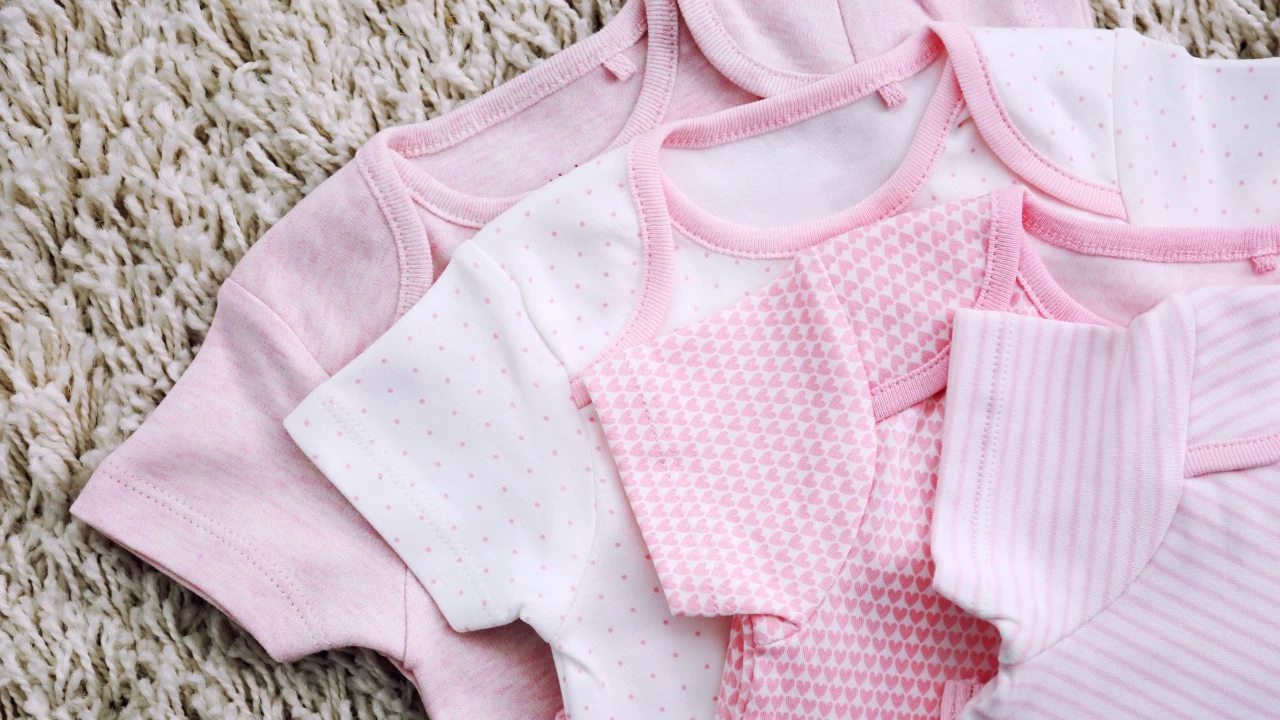
一説によると、この世には1600万種類を超える色があるそうです。あなたのお気に入りの色は何ですか?ネイティブスタッフによる英語エッセイ、今回は「色」にまつわる意外な歴史やフレーズをご紹介します。
目次
Thoughts on Colors(色について思うこと)
Color Coding?
“Margaret, could we ask you a question?” Surprised, I looked up. One of the Korean students in my Japanese class, accompanied by her two friends, had approached me. Our final class had just ended, and I was packing up my things to head home. “We would like to know how old you are,” she continued shyly. “The colors you wear are for someone in her 20s, but we think you might be older ...” I tried hard not to laugh. “Actually, my parents have been visiting me,” I said, “and I’m wearing one of my mom’s dresses today. She’s 69!” Up until that point, it had never occurred to me that colors could be attached to a person’s age! What? The colors one wears are not connected to your personal preference or what actually looks good on you but how many times the sun has gone around the earth in your lifetime? (This happened a long time ago – my first time in Japan – but I still remember how I felt that day.)
Now that I’m older, I know well that color associations are highly influenced by age along with cultural background. When I wore a favorite yellow sundress when I lived in Mexico, my friends there jokingly told me that only crazy people and those with very strong characters wore that color. I was neither! I just liked the color. (Well ... maybe a little crazy.)
色分け?
「マーガレット、質問してもいい?」驚いて私は顔を上げました。日本語クラスにいる韓国人生徒の一人が、友人二人を連れて私に近づいてきたのです。最後の授業が終わって、私は家に帰るために荷物をまとめているところでした。「あなたの年齢を知りたいの」、彼女は恥ずかしそうに続けました。「あなたが着ている服の色は20代の子向けだけど、あなたはそれより年上かもしれないと思って・・・」と。私は懸命に笑いをこらえました。「実は、両親が訪ねてきてるの」。私は「それで、今日は母の服を着ているの。母は69歳よ!」と言いました。そのときまで、色が人の年齢と結び付けられるなんて思い付きもしませんでした!何?着る色は、個人の好みや実際に似合うものではなく、太陽が地球を何周したかに関係しているんですか?(これはもうずいぶん昔――私が初めて日本に来たときのことですが――あの日の気持ちは今でも覚えています)
年を重ねた今、色の連想は年齢や文化的背景に大きく影響されることをよく分かっています。メキシコに住んでいた頃、お気に入りの黄色いサンドレスを着ていたら、友人たちに「頭のおかしい人か、よほど強烈な個性の人しかその色は着ないよ」と冗談めかして言われました。私はそのどちらでもありませんでしたよ!ただ黄色が好きだっただけです。(まあ・・・少し変かもしれませんけど)
Pink for Boys!

And, of course, there’s gender! When you think of it logically, isn’t it a little strange how we attribute male and female qualities to the way light hits a surface? It turns out that a lot of it has to do with society and marketing. For example, these days, pink is for girls and blue is for boys, but it used to be the other way around. A little hard to believe, right? But it’s true.
In times gone by, at least in North America, both young boys and girls were dressed in white dresses until the age of 6. It was just practical. White material was cheaper than dyed material and could be bleached easily to keep the outfits looking clean. You could recycle the same outfits for all your children. And then ... marketers began realizing that they could double their money by selling separate clothes for girls and boys. An 1893 article in The New York Times stated that you should "always give pink to a boy and blue to a girl." Pink was seen as a relative of the passionate, aggressive red, i.e, appropriate for boys and too “harsh” for girls. So blue, considered a gentler color, the color of the sea and sky, was assigned to girls. By 1927, U.S. department stores were strongly pushing parents to dress their boys in pink.
So how did things reverse like they have? Some people blame Marilyn Monroe’s wearing of a pink gown in the 1953 movie Gentlemen Prefer Blondes. Others put the blame on a sparkling pink dress worn by Mamie Eisenhower, the wife of the U.S. president, at the 1953 inaugural ball. Pink was the first lady’s favorite color. Both of these women were seen as feminine ideals. Around that time, there was an explosion of consumer goods and advertising, and pink became the default color for women’s things.
Maybe the consumer world has often divided up the colors for men and women, but in the real world, we are all individuals! I know that society and tradition are very important, but to me, it feels a little spooky to immediately put a child into either blue or pink clothes. It is almost as if we are writing a script for their lives.
男の子のためのピンク!
そしてもちろん、性別も関係してきますね!論理的に考えてみると、男性と女性の資質が光の当たり方で決まるというのは、少し妙ではないですか?その多くは社会とマーケティングが大いに影響していると分かりました。例えば、近頃は、ピンクが女の子向けで青が男の子向けとされていますが、かつては逆でした。少々信じがたいかもしれませんね?だけど本当です。
その昔、少なくとも北アメリカでは、幼い男の子も女の子も6歳までは白い服を着ていました。単に実用的だったからです。白い生地は染めたものより安く、漂白も簡単で、清潔感を保つことができました。同じ服を全ての子どもに再利用することもできました。そしてそれから・・・マーケティング担当者たちは、女の子用と男の子用で別々の服を売れば、儲けを倍にできと気付き始めたのです。ニューヨーク・タイムズ紙の1893年の記事には、「男の子にはピンクを、女の子にはブルーをいつでも着せる」べきと書かれていました。ピンクは、情熱的で積極的な赤の仲間、すなわち、男の子にふさわしく、女の子にはあまりにも「きつい」と見なされていました。そのため、優しい色と考えられた青色、海や空の色が、女の子に割り当てられたのでした。1927年までには、アメリカの百貨店は親に対して、男の子にはピンクの服を着せるように強く勧めていました。
では、どのようにしてこの状況は逆転したのでしょうか?マリリン・モンローが1953年の映画『紳士は金髪がお好き』で着たピンクのガウンのせいだと非難する人もいます。1953年のアイゼンハワー大統領就任舞踏会において、大統領夫人のマミー・アイゼンハワーが着用したキラキラ光るピンクのドレスのせいにする人もいます。ピンクは大統領夫人のお気に入りの色でした。彼女たちはどちらも女性の理想像と見なされていました。その頃、消費財や広告が急激に普及し、ピンクは女性もののデフォルトカラーとなったのです。
消費者の世界では男女で色を分けることがよくありますが、現実世界では、私たちはみんな個人です!社会や伝統がとても大切なのはわかるけれど、私には、すぐさま子どもに青かピンクどちらかの服を着せるのは、少し不気味に感じます。まるで、子どもたちの人生の脚本を書いているかのようです。
Color Psychology
Colors really do color the way we see the world. They can even change the way we act. In fact, as early as 4,000 years ago, the ancient Egyptians recorded using “color cures,” including painted rooms or sunlight streaming through crystals, as forms of therapy. Apparently, color influences perceptions that are not obvious, such as the taste of food – something that marketers know very well!
Colors can communicate ideas and emotions that are hard to describe. I am sure we have all had “the blues” at times, and who hasn’t been angry enough to “see red”? If so much wasn’t connected to society and culture, the use of colors would be like a universal language!
Can you imagine a world without color? What a dismal world that would be! Let’s not take colors for granted. Oh, and as Cindi Lauper would say, let’s not be afraid to show our true colors! They’re beautiful.
色彩心理学
色は本当に、私たちの世界の見方に影響を及ぼします。私たちの行動の仕方さえも変えてしまいます。実際、4000年前には古代エジプト人がセラピーとして、塗装された部屋、あるいは水晶から差し込む太陽の光など、「色による治療法」を用いていたと記録を残しています。どうやら色は、食べ物の味など、見てすぐはわからない知覚に影響を与えるようです――マーケティング担当者はよく知っていることですね!
色は、言葉で表現するのが難しい考えや感情を伝えることができます。私たちは誰でも「憂うつな気分」になったことがあるでしょうし、時々、「激怒する」ことがない人はいないでしょう?もしこれほど多くのことが社会や文化と結び付いていなければ、色の使用は世界共通の言語のようなものになるでしょう!
色のない世界を想像できますか?どんなに陰気な世界になることでしょう!色を当たり前のものと思わないようにしましょう。ああ、シンディ・ローパーが言うように、自分の本当の色を見せることを恐れないで!それは美しいですから。
語注
Color Coding?
| 語句 | 意味 |
|---|---|
| accompanied by ~ | ~が同伴する、~に付き添われる |
| preference | 好み、優先傾向 |
| color association | 色彩連想 |
| sundress | (肩・背中を露出した夏用の)サンドレス |
| jokingly | 冗談めかして、ふざけるように |
Pink for Boys!
| 語句 | 意味 |
|---|---|
| attribute | ~に帰する、~のせいにする |
| the other way around | (状況が)逆で、あべこべに |
| harsh | (強すぎて)不快な,どぎつい |
| inaugural ball | 就任舞踏会 |
| feminine | 女性の、女らしい |
| explosion | 急増、激増 |
| spooky | 不気味な、気味の悪い |
| script | 台本、脚本 |
Color Psychology
| 語句 | 意味 |
|---|---|
| color | ~(考えなど)に影響を及ぼす、偏らせる |
| perception | 知覚、認知、理解,考え |
| the blues | ブルーな気分、憂うつ |
| see red | 激怒する |
| dismal | 陰気な、憂うつな |
| take ~ for granted | ~を当然のことと思う |
Color-Related Expressions(色に関する表現)

色を使った表現を紹介します。
These are just a few of the countless number that exist. Use them to add color to your conversations!(これらは無数に存在するうちのほんの一部です。あなたの会話に彩りを加えるために使ってみてください!)
green with envy(ひどくねたんで、うらやましがって)
Use this when you are extremely jealous or envious about something. “Elizabeth has a great new job that requires her to visit several European countries. I am so green with envy!”
何かについて非常にねたんだりうらやましくなったりしたときにこの表現を使います。例:「エリザベスの新しい仕事は素晴らしいよ。ヨーロッパを数カ国訪問するんだって。すごくうらやましい!」
paint the town red(飲んで浮かれ騒ぐ、大いに飲み歩く)
This means to go out and celebrate in a lively and extravagant manner. “I got the promotion and I’m now ready to take my friends out and paint the town red!”
これは、街に繰り出して、陽気にそして金に糸目をつけずにお祝いすることを意味します。例:「昇進が決まったので、友人を連れて飲んで浮かれ騒ぐ準備はできてるよ!」
out of the blue(思いがけなく、突然)
This means something has happened unexpectedly or without any warning. “Out of the blue, I was fired by my manager. I am still in shock.”
これは、いきなり、あるいは何の前触れもなく何かが起こったことを意味します。例:「突然、上司に解雇されました。まだショックを受けています」
once in a blue moon(めったに~ない)
This phrase refers to something extremely rare in occurrence. ”Once in a blue moon, my wife cooks a nice dinner for me!” By the way, a real blue moon is the second full moon in a calendar month.
このフレーズは、極めて稀にしか起こらないことを指します。例:「めったにないんだけど、妻は素晴らしい夕食を作ってくれることがあるんだ!」 ちなみに、本当のブルームーンとは、暦の上では月の2度目の満月のことです。
red-handed(現行犯の)
This phrase is used to describe someone caught in the act of doing something wrong. “The shoplifter was caught red-handed by the security guard.”
このフレーズは、悪いことをしている最中に捕まった人を表すのに使われます。例:「その万引き犯は現行犯で警備員に捕まった」
black-and-white(白黒がはっきりした、両極端の)
A black-and-white situation is one that is clear and simple – and easy to understand. It is most often used in the negative – because situations rarely are black and white! “Whether to rent or buy is far from a black-and-white issue.”
black-and-whiteな状況とは、簡単明瞭で――理解しやすい状況のことです。ほとんどの場合、否定的に使われます――なぜなら状況が白黒はっきりすることはめったにないからです!例:「賃貸か購入かは、白黒はっきりさせる問題には程遠い」
gray area(グレーゾーン、どちらに属するとも言えない領域)
In contrast to the above, a gray area is a situation that is not clear or where the rules are not well-defined. “The issue of allowing smartphones in the classroom is a gray area right now.”
上記とは対照的に、gray areaとは、はっきりしていなかったり、ルールが十分に定義されていない状況を指します。例:「教室でのスマートフォン使用許可に関する問題は現在、グレーゾーンです)
in the pink(とても元気で、絶好調で)
If you say someone is in the pink you mean that person is in good health and high spirits. “She is completely over her illness and is now in the pink!”
「誰かがin the pinkだ」と言う場合、その人が健康で元気であることを意味します。例:「彼女は病気を完全に克服し、今は絶好調だ!」
white lie(たわいない[罪のない]うそ)
This refers to a harmless or trivial lie told to avoid hurting someone's feelings. “I told a little white lie and said she looked gorgeous.”
これは、誰かの感情を傷付けないようにするために言われる、無害あるいは些細なうそを指します。例:「彼女が素敵だなんて、たわいないうそをついた」
boocoで読める!アルクの新刊、続々登場
語学アプリ「booco」なら、アルクのベストセラー書籍200タイトル以上が、学習し放題!
「キクタン」などアルクの人気書籍800冊以上が音声対応。「読む」に対応した書籍では、本文と音声をスマホで手軽に利用できるほか、一部の書籍では、学習定着をサポートするクイズ機能で日々の復習や力試しも可能です。さらに、Plusプランに加入すれば200冊以上の書籍が学習し放題に!
boocoの「読む」機能では、次のような使い方ができます。
① 学習したいページを見ながら音声を再生できる
② 文字サイズや画面の明るさを調整できる
③ 書籍内検索ができる
※ これらの機能には一部の書籍が対応しています。

▼「booco」の無料ダウンロードはこちらから






